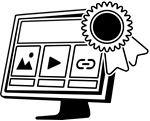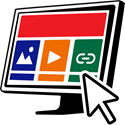Why should you consider incorporating STEM and web design into curriculum? Do students really need to know how to build web pages? After all, how likely is it that they will choose jobs in computer science or careers requiring any these skills? What benefit is an understanding of web design if becoming a web designer is not a future goal?

Learning how to create a web page has substantive value. Knowledge of website construction and the decisions that need to be made in its creation empower students. Following are some of the benefits to teaching STEM and web design.
Provides an Authentic Audience
When students make a website and publish it in the public domain, they are aware that not just their teacher or classmates will be viewing their results. Anyone in the world will be able to see it. They are motivated to provide the best quality of their work by having an unlimited number of actual, legitimate viewers. This is strong incentive for putting their best efforts into their creations.
Builds Digital Citizenship
In designing a web page, a student becomes a producer of information. With this power comes responsibility. The website should be a meaningful contribution to the World Wide Web. To achieve this goal students must apply Internet search strategies to link to trustworthy sources of information. They must also respect copyright laws in regards to the use of media. Moreover, they need to create content that is respectful of others. These activities promote digital citizenship as it requires them to behave appropriately when online.
Develops Media Awareness
Considering the perspective of the audience is a critical skill in web page design. In planning an online publication, students should first reflect on their target audience. Whether it is their peer group, younger kids, or the public in general, the website should be appropriate. Decisions about wording, types of graphics, and suitability of hyperlinks is affected by the type of viewer. A clear navigation system through the site, information blocked into organized headings, appealing images, and working and informative links all contribute to a site attractive to the consumer. Understanding what engages an online audience is essential.
Fosters STEM Career Skills
Very few students will become actual web page designers. However, a very large proportion of students will pursue careers related to technology skills. Whether they become online marketers, bloggers, programmers, software developers, scientists, systems analysts, or engineers, the future will favor young adults who have STEM skills. Building a website can spark an interest in pursuing other STEM areas.
Promotes Creative Arts
STEM has been amended to STEAM to include the value of the Arts. When publishing a web page, creative decisions need to be made: background themes, layout, image choice and type, text typeface and formatting, and overall page appearance. These choices are all important in keeping the viewer engaged. Eye catching and aesthetically appealing websites will attract and hold a viewer’s attention.
Encourages Collaboration

Effective communication skills are an integral part of many STEM job skills postings. It’s a rare career that doesn’t require proficiency in working as a group. And website creation isn’t done in isolation. Before publication, a site should be submitted to peers for comments and constructive critique. The written or spoken teamwork between designer and testers is a key component in the development of a successful project.
TechnoSite to Teach STEM and Web Design Using Google Sites

TechnoSite is a project in which students become web designers. Using Google Sites and following illustrated, step-by-step instructions, they construct a website that includes links to fun places for kids on the World Wide Web. Develop vital career skills by teaching STEM and web design. Learn more about TechnoSite and how you can purchase and download it today!
